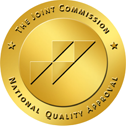The abuse of prescription painkillers is a growing problem in the United States. According to statistics, an estimated 20 percent of Americans use prescription drugs for nonmedical reasons. Misuse and long-term use of prescription painkillers such as OxyContin, Vicodin, Valium, Xanax, Ritalin and Adderall can quickly spiral into dependency and addiction. Once dependency occurs, a person’s best hope of recovery is to undergo prescription painkiller detox at a drug rehab that also provides addiction treatment.
Prescription Painkiller Detox: Withdrawal Symptoms
Drug detox is an essential part of any recovery program. Without it, residual drug toxins can remain in the body and cause cravings years after drug use has ceased, putting the person at risk for relapse. Detoxification flushes out all of the painkiller’s toxic residue and purifies the person’s body so the unwanted effects of the drug are no longer present.
During the initial stages of detoxification, physical and psychological withdrawal symptoms will appear. The nature and severity of these withdrawal symptoms vary greatly depending on the type of painkiller used and the frequency of use, but a good detoxification program will provide medical and supervised care to help alleviate and even eliminate the uncomfortable symptoms of drug withdrawal.
Withdrawal from prescription painkillers can cause anxiety, depression and intense psychological pain that causes the person to falsely believe that they have to take painkillers in order to survive. Physical withdrawal symptoms from prescription painkillers include:
* Nausea
* Cramping
* Vomiting
* Insomnia
* Hot/cold sweats
* Joint and muscle pain
Prescription Painkiller Detox: Getting Treatment
Most drug detox centers simply provide treatment to avoid the physical withdrawal symptoms. If you’re serious about recovery, though, you should find a prescription drug detox center that incorporates counseling and therapy during detox to help with the psychological components of your addiction as well.
The first step is to consult with a medical professional or a facility that specializes in prescription drug addiction treatment. They can determine which type of treatment program is best for you. There are many different types of treatment programs to choose from, but the best type of drug rehab for prescription drug abuse is residential treatment. Residential treatment for prescription drug abuse provides a structured environment that’s free of temptations and distractions, and provides round-the-clock care and support to help the individual focus on recovery. Residential treatment programs will provide supervised detoxification from the prescription drug’s harmful toxins, individual and group therapy to learn new ways to cope without using drugs, and holistic therapies such as yoga, meditation and equine therapies to heal the spirit and mind as well as the body.
When choosing a treatment center, ask if they offer dual diagnosis treatment and chronic pain management. Oftentimes a person will start abusing prescription painkillers as a way to cope with an underlying mood or personality disorder, such as depression, anxiety, post-traumatic stress disorder (PTSD), etc., or to cope with chronic pain. Dual diagnosis treatment will simultaneously treat both the addiction and the underlying disorder so that full recovery is possible. And learning how to manage chronic pain without the use of drugs can help a person find alternative ways to cope with pain without using painkillers.
Prescription Painkiller Detox: After Treatment
The point of drug detox and treatment is to rid the body of all residual drugs and to treat the physical and psychological addiction to the drug. Even after treatment, though, relapse may occur. This is an unfortunate reality of recovery, but it is one that can be minimized through aftercare programs.
When choosing a drug rehab, choose one that offers aftercare programs to help you work through the difficult first months of sobriety. Sober living is often a good follow-up to any effective prescription drug addiction rehab. It allows you to live in a clean, sober environment so that you can re-learn how to live a life without drugs and alcohol during the delicate first months of recovery. Sober living is often recommended for people who have just completed residential treatment and are at risk for relapsing if they return home.
Don’t let prescription drug abuse define who you are any longer. Get the help you need and deserve at a quality prescription drug rehab.




